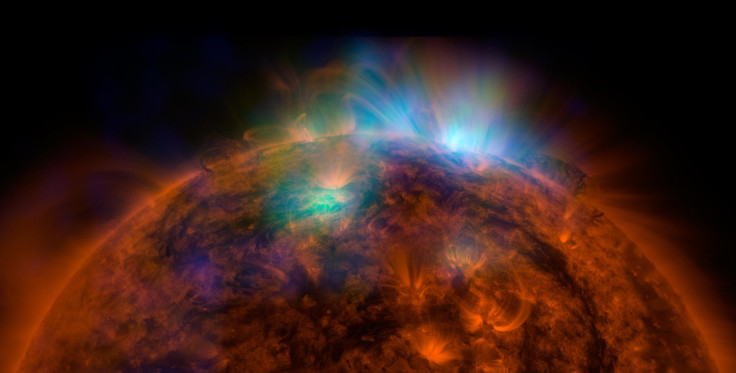Is The Sun Special? No, Other Stars In Universe Are Doing All The Same Things

The more we learn about the universe, the more we understand that our solar system is not as unique as we’ve always believed it to be. And the sun is no exception, especially now that scientists have unlocked a mystery of its magnetic cycle.
Using simulations of magnetic fields on stars, the researchers confirmed the sun’s brightness and how fast it rotates determine how its magnetic field operates, according to an article in the journal Science.
“Solar-type stars, including the sun, follow this relation,” the study says. “The results advance our understanding of how stars generate their magnetic fields and confirm that the sun is indeed a solar-type star.”
Read: Lunar Swirls Are the Moon’s Version of Tan Lines
The sun’s magnetic fields follow an 11-year cycle and the way those fields move during that period plays a role in solar activity, like the pattern of sunspots and how the sun spews radiation and material into space. Sunspots are dark patches on the sun that signify lower heat levels in a certain area, which are caused by the configuration of the magnetic fields above them. Those fields also determine when and where the sun ejects hot gas and electrically charged particles — some of which make their way to Earth and interact with our own magnetic fields, potentially interrupting communications and satellite systems and creating the colorful displays called auroras near the planet’s poles.
Knowing how luminosity and rotation speed play into the magnetic field cycle could help experts predict solar activity, including the kind that would interfere with a rocket launch, for example.
“We have shed light on a fundamental mechanism which determines the length of these cycles, which helps us understand the cycle itself over the long-term,” lead author Antoine Strugarek told AFP.
That relationship between luminosity, rotation and the solar cycle works the same way here as it does on other stars comparable to the sun, the researchers say, despite the previous notion that the sun did not conform to the rules of other solar-type stars that astronomers have observed. Even though those other stars have their own cycles, it didn’t look like the sun was behaving in the same way they do.
With this new information, scientists will have a better idea if “the sun’s next magnetic cycle in 10 or 20 years will be intense, long or short, which helps us understand among other things what kind of satellites to put in orbit and the most favorable launch windows,” Strugarek said.
Read: Are Sun Eruptions All the Same?
Among the hazards to Earth from the sun’s activity is the solar wind, the stream of charged particles that can disrupt or even damage the satellites that relay signals through the atmosphere. That could mess with GPS systems and radio communication. The solar wind can also cause damage to electric grids. These negative effects make it important to understand how the sun operates.
© Copyright IBTimes 2024. All rights reserved.





















